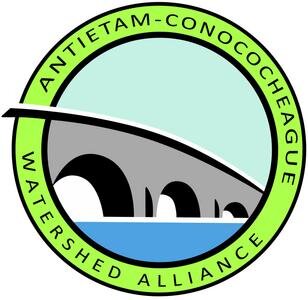The Three Indigenous Tribes of the Antietam and Conococheague waterways
Land Acknowledgement of the Antietam-Conococheague
by Zander Hine, ACWA Student Board Member
The Antietam-Conococheague watershed is believed to be the ancestral homeland for several different indigenous tribes prior to the English settlements of the 1730s. These tribes include the Piscataway people, the Massawomeck people and very likely the Susquahannock people. The indigenous people “maintained semi-nomadic traditions and maintained relationships with a variety of lands. After Europeans arrived, the rate of movement steadily increased for most tribes as treaties, settler land theft, military actions, and new alliances forced them to relocate. Given these historical facts, it is sometimes difficult to define the precise borders of “traditional territories” or “homelands.” (Maryland State Arts Council).
Conococheague Creek
Evidence has been found pointing to three specific tribes using the Antietam and Conococheague waterways and surrounding areas as hunting, gathering, and traveling lanes. The Piscataway, meaning “the people where the river bends,” was one of the most expansive tribes in Maryland, residing from the Chesapeake Bay to the Potomac River. Throughout the 1600s, the Piscataway people would travel to the mountains to mine for metals to make tools, but they mainly resided in the Southern part of the state. The Piscataway people were forced out of their homes during the colonization of America, with some of the tribes moving northwest, near present day Detroit and Canada. Today, the remaining members of the Piscataway tribe either dissipated into their region’s cultures or are living with the Six Nations of the Grand River First Nation in Ontario.
The Massawomeck people were another tribe found in Maryland during the 16th century, a part of the larger Iroquois tribe. It is reported that Massawomeck people were highly nomadic traders and they had relationships with the land from West Virginia into Maryland as well as down into Virginia as part of their trade route. The Massawomeck were pushed from their land and joined neighboring tribes. Today, there are small numbers of Massawomeck descendants in the Meherrin tribe of North Carolina as well as the Seneca-Cayuga Nation in Oklahoma.
Finally, the Susquahannock people who primarily resided to the north of our area found their way to western Maryland as a result of the unrest with the Iroquois tribe. The Susquahannock suffered many losses due to the European illnesses such as smallpox, reducing their numbers to less than a quarter of what it was. Eventually, the Susquahannock people returned to Pennsylvania, settling near what is now York. While there are many descendants of the Susquahannock people, the tribe is historically extinct.
Beaver Creek
Antietam Creek
The mission of the Antietam-Conococheague Watershed Alliance is “connecting people to their waterways through recreation, education, and conservation.” ACWA, as an organization, focuses on the environment around us and preserving it for the future. It is important to recognize that we are not the first people to live on this land.
We acknowledge the lands and waters now known as Antietam-Conococheague watershed are in relationship with the native first peoples: The Piscataway, the Massawomeck, the Susquahannock as well as the historically erased people who once inhabited these lands. We also acknowledge that the removal of the first people from the land that nurtured them was not by choice. We acknowledge that the degradation that has occurred to the lands and waters of the Antietam-Conococheague watershed is not in keeping with the respect and honor that the ancestors of this land held dear. It is our obligation now to allow the land and waterways to heal and to do what must be done to preserve it.
Sources
1. https://msac.org/media/1259/download?inline
2. https://storymaps.arcgis.com/stories/f25979811cf5437e9c462694e83a9f82
3. https://www.heraldmailmedia.com/story/lifestyle/2021/05/09/agriculture-industry-hagerstowns-surprising-history/4946444001/#
4. https://npshistory.com/publications/anti/aoaie-v1-2014.pdf
Little Antietam Creek - South




